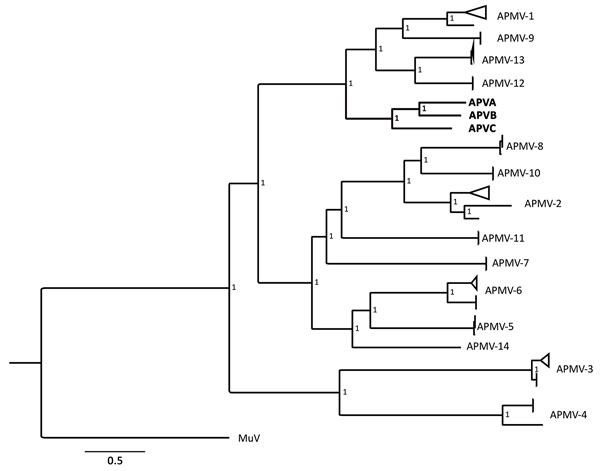Novel Avulaviruses in Penguins, Antarctica
Víctor Neira

, Rodrigo Tapia, Claudio Verdugo, Gonzalo Barriga, Sunil Mor, Terry Fei Fan Ng, Victoria García, José Del Río, Pedro Rodrigues, Cristóbal Briceño, Rafael A. Medina, and Daniel González-Acuña
Author affiliations: Universidad de Chile Facultad de Ciencias Veterinarias y Pecuarias, Santiago, Chile (V. Neira, R. Tapia, V. García, J. Del Río, C. Briceño); Universidad Austral de Chile Facultad de Ciencias Veterinarias, Valdivia, Chile (C. Verdugo, P. Rodrigues); Pontificia Universidad Católica de Chile, Santiago (G.P. Barriga, R.A. Medina); University of Minnesota College of Veterinary Medicine, St. Paul, Minnesota, USA (S. Mor); University of Georgia College of Veterinary Medicine, Athens, Georgia, USA (T.F.F. Ng); Icahn School of Medicine at Mount Sinai, New York, New York, USA (R.A. Medina); Millennium Institute on Immunology and Immunotherapy, Santiago (R.A. Medina); Universidad de Concepción, Chillán, Chile (D. González-Acuña)
Main Article
Figure

Figure. Bayesian phylogenetic tree based on concatenated nucleoprotein, phosphoprotein, matrix protein, fusion protein, hemagglutinin-neuraminidase protein, and RNA-dependent RNA polymerase protein gene sequences of 80 avulaviruses analyzed in a study of avulaviruses in penguins, Antarctica. Mumps virus was used as outgroup. Bold indicates the 3 novel viruses isolates in this study. The best-fit model of nucleotide substitution was generalized time reversible plus gamma plus invariant sites. The analysis was considered complete if the average SD of the split frequencies was <0.01 and effective sample size was >200. The values represent the posterior probabilities of each node. Scale bar indicates nucleotide substitutions per site. APMV, avian paramyxovirus; APVA, Antarctic penguin virus A; APVB, Antarctic penguin virus B; Antarctic penguin virus C; MuV, mumps virus.
Main Article
Page created: June 19, 2017
Page updated: June 19, 2017
Page reviewed: June 19, 2017
The conclusions, findings, and opinions expressed by authors contributing to this journal do not necessarily reflect the official position of the U.S. Department of Health and Human Services, the Public Health Service, the Centers for Disease Control and Prevention, or the authors' affiliated institutions. Use of trade names is for identification only and does not imply endorsement by any of the groups named above.
